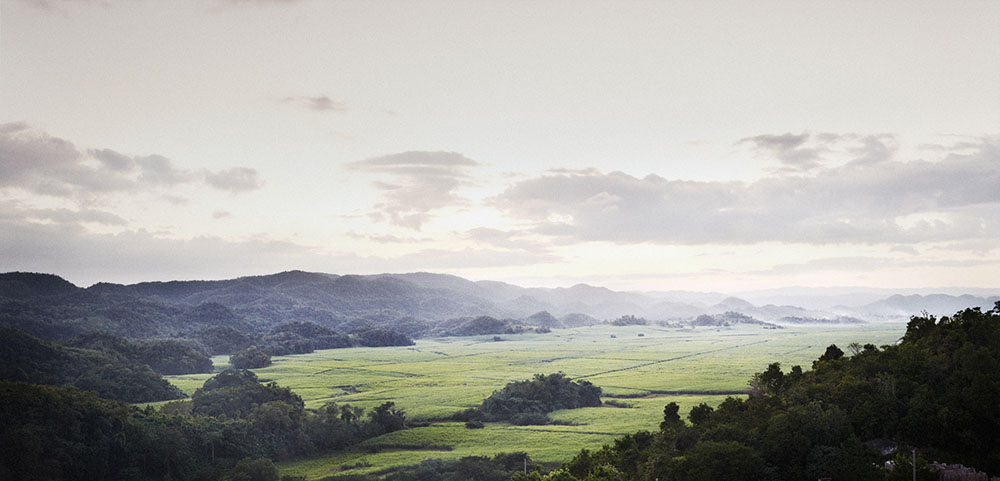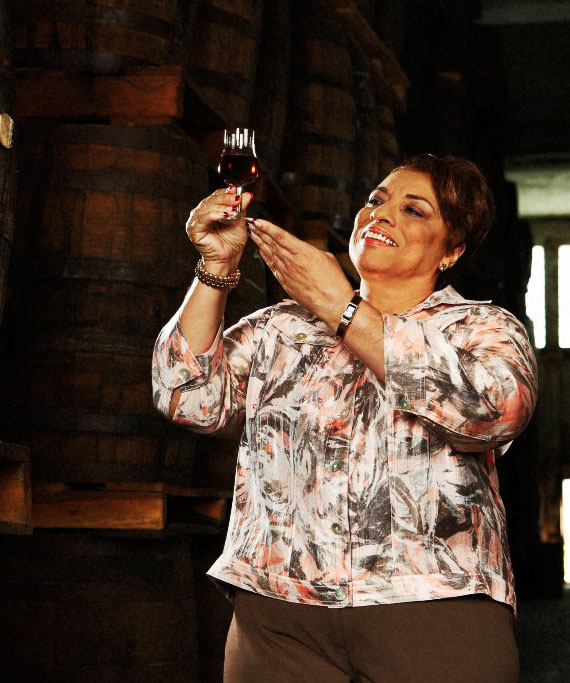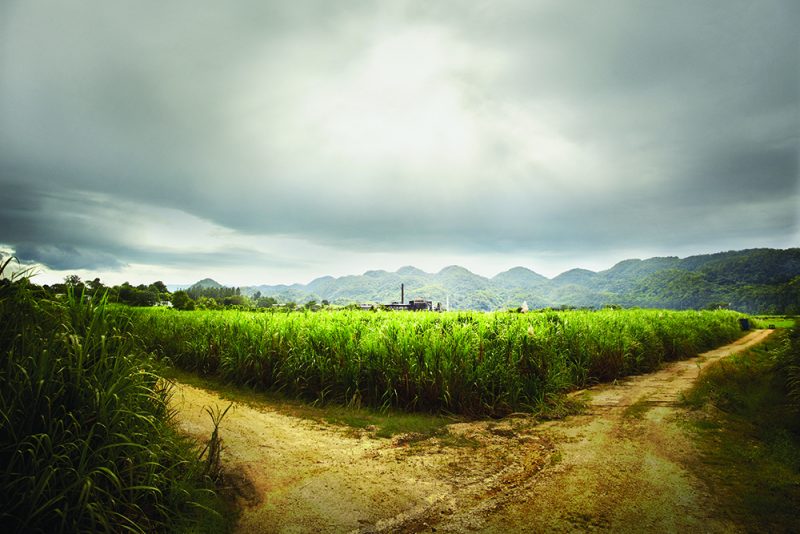
Icy, carbon-grey foam-crested breakers mercilessly pound the stone jetty outside. A vicious southeast gale bends barren trees to near breaking. Pellets of freezing rain coat my window with a rippling second skin while icicles — looking like the fangs of some Abominable Snowman dripping arctic saliva — tenaciously grip exposed surfaces.
The outer shores of Baffin Island? The view from a moored trawler hammered by a North Atlantic tempest? The vista of the last of humanity as the heaving mass of the final Ice Age envelopes the earth? Try Toronto in January.
The sunny “ping” from my laptop signals an incoming email. “Well, at least the power’s still on,” I mutter as I pull my gaze away from the hypothermia-inducing landscape outside. Expecting a phone bill or a credit card bill or some other sort of junk mail, I check my inbox with minor trepidation. And, bang! Nothing thaws a midwinter state of mind faster than an invitation to Jamaica for some sun, fun and, obviously, rum. The only ice I’ll have to deal with will be in my glass, mon!
Before me is a vast sea of lush, dense, emerald green foliage that extends unbroken to the rolling hills on the horizon. The air is warm. The smell of exotic vegetation — and of equally exotic food being prepared on the outside deck of Stush in the Bush — permeate the air and intoxicate my senses.
From there I take in the gorgeous landscape typical of the inland part of the island, which occupies nearly 11,000 square kilometres of land floating about 145 kilometres south of Cuba. Bamboo, ferns, ebony, mahogany and rosewood intermingle. Bats gorge on airborne insects as the sun dips in the distance.
Nothing thaws a midwinter state of mind faster than an invitation to Jamaica…
Think Jamaica, and the first images that likely come to mind are those of cyan seas, crystalline beaches and the outer walls of the exclusive resorts that pepper the coast. While there’s no denying that these attractions shouldn’t be missed, a trek over winding jungle roads into the heart of the country opens up an entirely different world — and some very different experiences.
To call Stush in the Bush a restaurant would be a grave underestimation; dining experience/adventure is perhaps more accurate.
Billing itself as “sexy vegetarianism,” it’s a combination of rustic Rastafarian in the Jamaican interior (a.k.a., bush) and chic (a.k.a., stush). It’s a farm-to-table vegetarian dining venue where proprietors Lisa and Chris utilize their own sustainably grown produce to craft a range of exotic (and delicious) menu items. Things like a rich, meaty Tuna Tartare made from pressed watermelon; a silky, fragrant Pumpkin Bisque with Coconut Bacon Pumpkin Seeds and Pumpkin Chips; Plantain Ceviche; Charcoal Fettuccine and Vegan Puttanesca. All paired with rum-laced cocktails. Meat, shmeat. I could live off this vegetarian gourmet stuff. Maybe.
Satiated and mellow, I’m back on the deck as the last of the molten sun disappears. In my hand is a glass of coconut water fortified with Appleton Reserve Blend rum. Beside me is David Morrison, Senior Blender for J. Wray & Nephew Limited. “This is a part of Jamaica most Jamaicans don’t ever see,” he admits. However, I suspect most Jamaicans are more than a little familiar with Wray & Nephew’s wares.
A subsidiary of the Campari Group, J. Wray & Nephew Limited is the oldest company in Jamaica and one of the Caribbean’s largest exporters. Though its portfolio encompasses more than 50 premium brands distributed in more than 190 countries, what it is likely most famous for is rum. The company owns three Jamaican sugar distillate estates, the most well known is no doubt Appleton Estate. As luck/coincidence/careful planning would have it, my visit to the island happens to coincide with the christening of a brand-new shrine to all things Appleton: the Joy Spence Appleton Estate Rum Experience.
Eponymously named after Wray & Nephew’s legendary Master Blender, the compound began life back in 1988 as the original visitor’s centre. Now, following a US$7.2-million upgrade, the centre can accommodate some 200,000 visitors annually and is poised to become the Nassau Valley’s top attraction.
Should you be fortunate to find yourself here, you’ll begin the tour as I did, in the in-house theatre where your appetite for learning more about rum will be whetted. A short film depicts the fascinating history of rum and of Appleton Estate itself — a distillery and sugar plantation that records show traces its roots back to 1749 (though most suspect it was in operation earlier than that). From here, it’s a cane-to-cup journey through all aspects of cane harvesting and processing, through to distillation, aging and blending.

Those working in the spirit industry may not agree on everything, but they will unanimously agree that spirit blending is indeed an art, and the name Joy Spence is spoken with reverence in this community of artists. I was both honoured and humbled to experience both a blending and tasting session with the legendary Joy Spence herself.
Spence tasked me with the challenge of crafting a “cocktail rum” using a palate of samples distilled in different manners and aged for various lengths. A cocktail rum would, I figure, likely contain a higher percentage of younger, column-distilled spirit to achieve an overall lighter profile that would marry well with other cocktail ingredients. Problem is that, outside of a dry gin Martini now and then, I don’t drink cocktails, and I like my rum neat, in a snifter. To me, cocktail rum is an oxymoron in spite of the near universal popularity of rum-based mixed drinks. Could I be blamed, then, for being a bit too heavy-handed in my addition of the well-aged, heavier, pot-distilled number? As I sip it, I judge my blend to be pretty tasty, if suitable only for fireside meditations back home. But just because I can’t create a great blend to spec doesn’t mean I can’t identify one when I taste it.
Spence and I work though the cornerstones of the Appleton Estate range. Starting with the Appleton Estate Signature Blend, we move on to the Appleton Estate Reserve Blend and the Appleton Estate Rare Blend 12-Year-Old before capping things off with the Appleton Estate 21-Year-Old Jamaican Rum. The exercise is a gradual progression of flavour, depth and complexity. The aromas of dried fruits, toasted nuts, caramel, sweet vanilla, cocoa and baking spices intensify as we reach the 21-Year-Old. Polished wood, new leather, sultana, dried citrus peel, dark chocolate and nutmeg aromas lead to a rich, warm, silky-smooth and intense palate that trails off into a long, slightly peppery finish. To my surprise, things didn’t stop there.
“I wanted to create a rum that would mesmerize not only rum drinkers, but also Scotch drinkers, bourbon drinkers and cognac drinkers,” Spence explains while pouring a measure of her Appleton Estate Joy Anniversary Blend Aged 25 Years. I inhale the gorgeous aromas of an absolutely, well, mesmerizing rum that seems to take the main features of the 21-Year-Old expression and layer on additional complexity, elegance and intensity.
While rum was the glue that held my Jamaican experience together, there are plenty of other things you might want to try. Yeah, I know what you’re thinking. Scoring weed in Jamaica isn’t exactly difficult, and though possession once meant some pretty stiff penalties, having 56.6 grams on your person today (about two ounces) has, since decriminalization in 2015, become a petty offence that will not result in a criminal record. Trafficking is still a no-no, so it’s probably best to enjoy your ganja as the natives would.
Oh, so that wasn’t what you were thinking? In that case, you might enjoy a stroll along some of Negril’s white beaches, water sports in the soothing, warm Caribbean water or a visit to the famous (and spectacular) Dunn’s River Falls near the port town of Ocho Rios. Should your base happen to be the same as mine — Montego Bay — you can relax in luxury at the Half Moon resort where you’ll find great food and plenty of, um, distractions. If you’re lucky, you’ll also find the same bartender who’s been plying me here on my last night with rather liberal free pours of Appleton Estate 21-Year-Old.
Tonight, I’m back at the Half Moon bar (of course) after a terrific dinner at The Sugar Mill. Part of the Half Moon resort, but located away from the main buildings on an old sugar plantation, The Sugar Mill specializes in interesting twists on typical Jamaican food. My dinner kicked off with a flavourful, velvety crayfish bisque that led to a course of succulent Coconut Crusted Grouper Filet. However, if you prefer to dine off site, you’re not far from great Jamaican jerk, slow-cooked, as it should be, over wood flames at Scotchies. Or, for something novel, try The HouseBoat Grill. Yes, it’s an actual houseboat that features some awesome dishes. Give your tastebuds a wakeup call with the Spicy Peel & Eat Pepper Shrimp before moving on to a main of ultra-fresh Pan Fried Fillet of Snapper in Thai Style Tamarind Sauce, Steamed Jasmine Rice, Sautéed Julienne Vegetables and a spectacular sunset to boot.
Back home in Toronto — where the weather is almost as depressing as when I first left — I look out my window at inky, ice-choked Lake Ontario wishing it were the inviting Caribbean Sea. In one hand is a small sample of the Appleton Estate Joy 25-Year-Old. In the other is a crystal brandy snifter. I’ve contemplated saving this liquid treasure for a more special occasion, but have decided that right now, imbibing the real soul of Jamaica will be the only way to warm mine.
“I wanted to create a rum that would mesmerize not only rum drinkers, but also Scotch drinkers, bourbon drinkers and cognac drinkers,” Joy Spence


